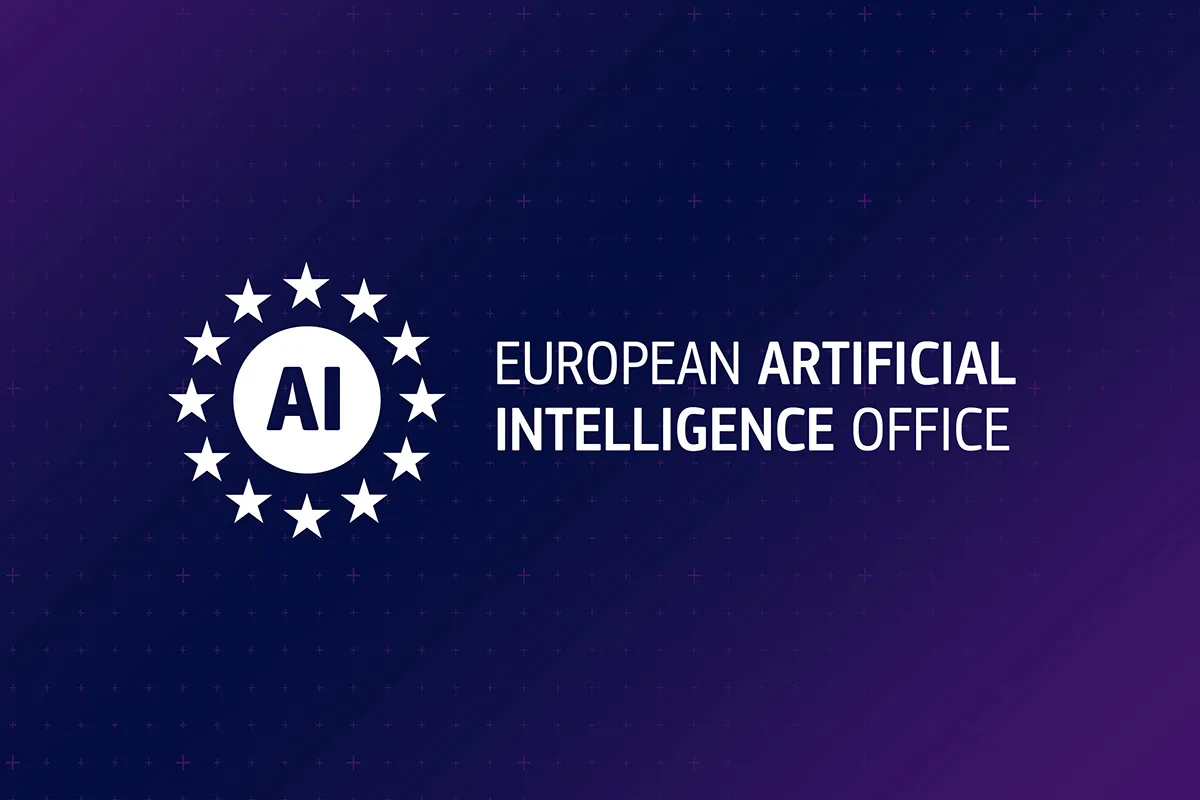From 3 days to minutes: How NN pojistovna accelerated claim processing
NN Insurance, a leading provider of life and accident insurance, sought to streamline and accelerate the evaluation of medical reports — a critical step in determining claim payouts. The manual process was slow, error-prone, and consumed valuable time from specialists. In collaboration with BigHub, NN deployed AI Diagnosis Mapper, an intelligent component that automates the reading, classification, and evaluation of medical reports while ensuring accuracy, transparency, and data integrity.

.avif)
"What I value most about working with BigHub is their combination of technological expertise and practical approach – they have real drive and a strong problem-solving mindset, always looking for solutions where others see obstacles. They were quick to adapt to changes and consistently found ways to move the project forward. I’m glad we’ve found in BigHub a partner who is both reliable and inspiring.”
Key pain points
- Manual and time-intensive review of every medical report.
- Specialists had to manually link diagnoses to internal valuation tables.
- High risk of human error and limited scalability.
- Experts were burdened with routine low-value claims instead of focusing on complex cases.
- Need for integration into existing systems without disrupting internal workflows.
BigHub’s solution
BigHub designed and implemented AI Diagnosis Mapper, a modular AI component based on advanced NLP models, fully integrated with NN’s internal infrastructure.
Capabilities:
- Automated reading and analysis of medical reports using language models.
- Automatic assignment of diagnostic codes and payout levels.
- Identification of complex cases that still require manual review.
- Continuous learning from historical data to improve accuracy over time.
- Seamless system integration with existing NN tools and databases.
- Full ownership and no vendor lock-in — NN retains the technology and know-how.
BigHub was responsible for AI architecture, model training, integration, and performance optimization.
Results
- Around 95 % accuracy in automated claim assessment.
- Claim processing time reduced from 2–3 days to as little as minutes in some cases.
- Lower manual workload and freed capacity for specialists.
- Increased quality, transparency, and auditability of all claim decisions.
- Faster, more consistent communication with clients and improved experience.
Key benefits for NN pojistovna
- Time and cost savings from automation of manual work.
- Higher service quality and consistency in decision-making.
- More efficient use of experts on complex claims.
- No vendor lock-in — full control over data, infrastructure, and future development.
- Scalability to other document types and processes within the insurance ecosystem.
Next steps
BigHub and NN plan to:
- Extend the solution to other insurance workflows and document types.
- Implement anomaly-detection models for fraud prevention.
- Enhance internal analytics through integration with additional AI modules.
News from the world of BigHub and AI
We’ve packed valuable insights into articles — don’t miss out.

From theory to practice: How BigHub prepares CVUT FJFI students for the world of data and AI
Bridging academia and real-world practice is key
At the Faculty of Nuclear Sciences and Physical Engineering of CVUT (FJFI), we are changing that. Since the 2021/2022 academic year, BigHub has been teaching full-semester courses that connect academia with the real world of data. And it’s not just lectures—students get hands-on experience with real technologies in a business-like environment, guided by professionals who deal with such projects every day.
What brought us to FJFI
BigHub has a personal connection to CVUT FJFI. Many of us—including CEO Karel Šimánek, COO Ing. Tomáš Hubínek, and more than ten other colleagues—studied there ourselves. We know the faculty produces top-tier mathematicians, physicists, and engineers. But we also know that these students often lack insight into how data and AI function in business contexts.
That’s why we decided to change it. Not as a recruitment campaign, but as a long-term contribution to Czech education. We want students to see real examples, try modern tools, and be better prepared for their careers.
Two courses, two semesters
18AAD – Applied Data Analysis (summer semester)
The first course launched in the 2021/2022 academic year, led by Ing. Tomáš Hubínek. Its goal is to give students an overview of how large-scale data work looks in practice. Topics include:
- data organization and storage,
- frameworks for big data computation,
- graph analysis,
- cloud services,
- basics of AI and ML.
Strong emphasis is placed on practical exercises. Students work in Microsoft Azure, explore different technologies, and have room for discussion. Selected lectures also feature BigHub experts who share insights from real projects.
18BIG – Data in Business (winter semester)
In 2024, we added a second course that builds on 18AAD. It is taught by doc. Ing. Jan Kučera, CSc. and doc. Ing. Petr Pokorný, Ph.D. The course goes deeper and focuses on:
- data governance and data management in organizations,
- integration architectures,
- data platforms and AI readiness,
- best practices from real-world projects.
While 18AAD shows what can be done with data, 18BIG demonstrates how it actually works inside companies.
Above-average student interest
Elective courses at FJFI usually attract only a few students. Our courses, however, enroll 20–35 students every year—an above-average number for the faculty.
Feedback is consistent: students appreciate the practical focus, open discussions, and the chance to ask professionals about real-world situations. For many, it’s their first encounter with technologies actually used in business.
.jpeg)
Beyond the classroom
Our involvement doesn’t end with teaching. Together with the Department of Software Engineering, we’ve helped revise curricula and graduate profiles, enabling the faculty to respond more flexibly to what companies in the data and AI fields really need. This improves the quality of education across the entire faculty, not just for students who take our electives.
It’s not about recruitment
Sometimes, a student later joins BigHub — but that’s not the goal. The goal is to ensure graduates aren’t surprised by how data work really looks. We want them to have broader, more practical knowledge and hands-on experience with modern tools. It’s our way of giving back to the institution that shaped us and contributing to the Czech tech ecosystem as a whole.
Collaboration with FJFI goes beyond teaching. Since BigHub’s founding, we’ve supported the student union and regularly participated in the faculty’s Dean’s Cup sports event, playing futsal, beach volleyball, and more. This year, we also submitted several grant applications together and hope to soon collaborate on joint technical projects. We believe a strong community and informal connections between students and professionals are just as important as textbook knowledge.

What’s next?
Our cooperation with CVUT FJFI is long-term. Courses 18AAD and 18BIG will continue, and we are exploring ways to expand their scope. We see that students crave practical experience and that bridging academia with real-world practice truly works. If this helps improve the quality of data and AI projects in Czech companies, it will be the best proof that our effort is worthwhile.

EU AI Act: What It Is, Who It Applies To, and How We Can Help Your Company Comply Stress-Free
What the AI Act is and why it was introduced
The AI Act is the first EU-wide law that sets rules for the development and use of artificial intelligence. The rationale behind this legislation is clear: only with clear rules can AI be safe, transparent, and ethical for both companies and their customers.
Artificial intelligence is increasingly penetrating all areas of life and business, so the EU aims to ensure that its use and development are responsible and free from misuse, discrimination, or other negative impacts. The AI Act is designed to protect consumers, promote fair competition, and establish uniform rules across all EU member states.
Who the AI act applies to
The devil is often in the details, and the AI Act is no exception. This legislation affects not only companies that develop AI but also those that use it in their products, services, or internal processes. Typically, companies that must comply with the AI Act include those that:
- Develope AI
- Use AI for decision-making about people, such as recruitment or employee performance evaluation
- Automate customer services, for example, chatbots or voice assistants
- Process sensitive data using AI
- Integrate AI into products and services
- Operate third-party AI systems, such as implementing pre-built AI solutions from external providers
The AI Act distinguishes between standard software and AI systems, so it is always important to determine whether a solution operates autonomously and adaptively, meaning it learns from data and optimizes its results, or merely executes predefined instructions, which does not meet the definition of an AI solution.
Importantly, the legislation applies not only to new AI applications but also to existing ones, including machine learning systems.
To save you from spending dozens of hours worrying whether your company fully complies, BigHub is ready to handle AI Act implementation for you.
What the AI Act regulates
The AI Act defines many detailed requirements, but for businesses using AI, the key areas to understand include:
1. Risk classification
The legislation categorizes AI systems by risk level, from minimal risk to high risk, and even banned applications.
2. Obligations for developers and operators
This includes compliance with safety standards, regular documentation, and ensuring strict oversight.
3. Transparency and explainability
Users of AI tools must be aware they are interacting with artificial intelligence.
4. Prohibited AI applications
For example, systems that manipulate human behavior or intentionally discriminate against specific groups.
5. Monitoring and incident reporting
Companies must report adverse events or malfunctions of AI systems.
6. Processing sensitive data
The AI Act regulates the use of personal, biometric, or health data of anyone interacting with AI tools.
Avoid massive fines
Penalties for non-compliance with the AI Act are high, potentially reaching up to 7% of a company’s global revenue, which can amount to millions of euros for some businesses.
This makes it crucial to implement the new AI regulations promptly in all areas where AI is used.
Let us handle AI Act compliance for you
Don’t have dozens of hours to study complex laws and don’t want to risk huge fines? Why not let BigHub manage AI Act compliance for your company? We help clients worldwide implement best practices and frameworks, accelerate innovation, and optimize processes, and we are ready to do the same for you.
We offer turnkey AI solutions, including integrating AI Act compliance. Our process includes:
- Creating internal AI usage policies for your company
- Auditing the AI applications you currently use
- Ensuring existing and newly implemented AI applications comply with the AI Act
- Assessing risks so you know which AI systems you can safely use
- Mapping your current situation and helping with necessary documentation and process obligations

Databricks Mosaic vs. Custom Frameworks: Choosing the Right Path for GenAI
Why Companies Choose Databricks Mosaic
For organizations that already use Databricks as their data platform, it is natural to also consider Mosaic. Staying within a single ecosystem brings architectural simplicity, easier management, and faster time-to-market.
Databricks Mosaic offers several clear advantages:
- Simplicity: building internal chatbots and basic agents is quick and straightforward.
- Governance by design: logging, lineage, and cost monitoring are built in.
- Data integration: MCP servers and SQL functions allow agents to work directly with enterprise data.
- Developer support: features like Genie (a Fabric Copilot competitor) and assisted debugging accelerate development.
For straightforward scenarios, such as internal assistants working over corporate data, Databricks Mosaic is fast and effective. We’ve successfully deployed Mosaic for a large manufacturing company and a major retailer, where the need was simply to query and retrieve data.
Where Databricks Mosaic Falls Short
More complex projects introduce very different requirements – around latency, accuracy, multi-agent logic, and integration with existing enterprise systems. Here, Databricks Mosaic quickly runs into limits:
- Structured output: Databricks Mosaic cannot effectively enforce structured output, which impacts the quality and operational stability of various solutions (e.g., voicebots or OCR).
- Multi-step workflows: processes such as insurance claims, underwriting, or policy issuance are either unfeasible or overly complicated within Databricks Mosaic.
- Latency-sensitive scenarios: Databricks Mosaic adds an extra endpoint layer between user and model, which makes low-latency use cases difficult.
- Integration outside Databricks: unless you only use Vector Search and Unity Catalog, connecting to other systems is more complex than in a Python-based custom framework.
- Limited model catalog: only a handful of models are available. You cannot bring your own models or integrate models hosted in other clouds.
Even Databricks itself admits Mosaic isn’t intended to replace specialized frameworks. That’s true to a degree, but the overlap is real – and in advanced use cases, Mosaic’s lack of flexibility becomes a bottleneck.
Where a Custom Framework Makes Sense
A custom framework shines where projects demand complex logic, multi-agent orchestration, streaming, or low-latency execution:
- Multiple agents: agents with different roles and skills collaborating on a single task.
- Streaming and real-time: essential for call centers, voicebots, and fraud detection.
- Custom logic: precisely defined workflows and multi-step processes.
- Regulatory compliance: full transparency and auditability in line with the AI Act.
- Flexibility: ability to use any libraries, models, and architectures without vendor lock-in.
This doesn’t mean Databricks Mosaic can’t ever be used for business-critical workloads – in some cases it can. But in applications where latency, structured output, or high precision are non-negotiable, Mosaic is not yet mature enough.
How BigHub Approaches It
From our experience, there’s no one-size-fits-all answer. Databricks Mosaic works well in some contexts, while in others a custom framework is the only viable option.
- Manufacturing & Retail: We used Databricks Mosaic to build internal assistants that answer queries over corporate data (SQL queries). Deployment was fast, governance was embedded, and the solution fit the use case perfectly.
- Insurance (Claims Processing): Here, Databricks Mosaic simply wasn’t sufficient. It lacked structured output, multi-agent orchestration, and voice processing. We delivered a custom framework that achieved the required accuracy, supported multi-step workflows, and met audit requirements under the AI Act.
- Banking (Underwriting, Policy Issuance): Banking workflows often involve multiple steps and integration with core systems. Implementing these in Databricks Mosaic is overly complex. We used a custom middleware layer that orchestrates multiple agents and supports models from different clouds.
- Call Centers & OCR: Latency-critical applications and use cases requiring structured outputs (e.g. form data extraction, voicebots) are not supported by Databricks Mosaic. These are always delivered using custom solutions.
Our role is not to push a single technology but to guide clients toward the best choice. Sometimes Databricks Mosaic is the right fit, sometimes a custom framework is the only way forward. We ensure both a quick start and long-term sustainability.
Our Recommendation
- Databricks Mosaic: best suited for organizations already invested in Databricks that want to deploy internal assistants or basic agents with strong governance and monitoring.
- Custom framework: the right choice when projects require complex multi-step workflows, multi-agent orchestration, structured outputs, or low latency.
At BigHub, we’ve worked extensively with both approaches. What we deliver is not just technology, but the expertise to recommend and build the right combination for each client’s unique situation.
Get your first consultation free
Want to discuss the details with us? Fill out the short form below. We’ll get in touch shortly to schedule your free, no-obligation consultation.
.avif)


